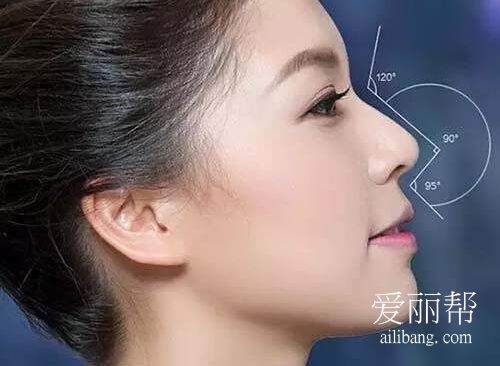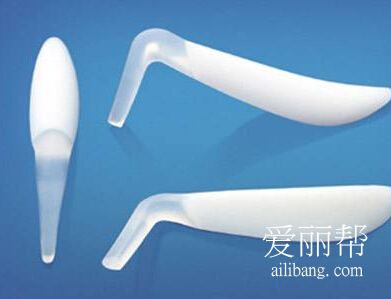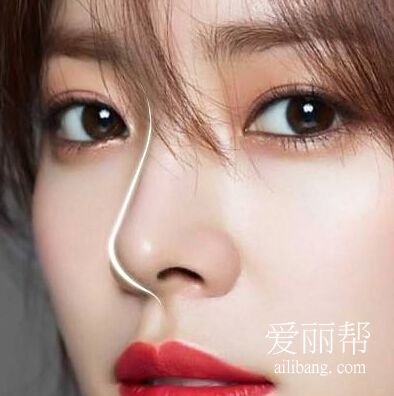Nose comprehensive plastic sculpture delicate nose
In the eyes of many beauty seekers, beautiful nose=augmentation, but perhaps the reason why your nose is not beautiful is not only the low bridge of nose, but also the collapse, too wide nasal alar, too short nasal columella, and other "defects". At this time, nasal comprehensive plastic surgery can play its own role.

The so-called comprehensive rhinoplasty is a single operation to change the height and shape of the nose by implanting appropriate materials. It is a comprehensive rhinoplasty operation, which mainly includes nine plastic contents: bulky (silicone) rhinoplasty, nasal head reduction, nasal alar reduction, nasal flap plastic surgery, nostril reduction, nasal columella lengthening, nose facing correction Hump repair and restoration of failed augmentation rhinoplasty. For nose defects caused by different reasons, comprehensive rhinoplasty can make up accordingly.
Root and back of nose
Possible problems: local depression of nasal root or bridge is low, and lack of stereoscopic feeling when viewed from the side;
Recommended scheme: implant the prosthesis. There are many fillings available for simply raising the nasal root and bridge. The injection materials include hyaluronic acid, collagen, and autologous fat. The prosthesis includes silica gel and bulky body. However, the duration of the effect of the injection materials is limited. If you want a long-term nasal beauty effect, the bulky body is. The plastic industry has different opinions on the advantages and disadvantages of silica gel and bulking, and doctors can be consulted for the final choice.
About silicone prosthesis

The silicone prosthesis is a high molecular silicide, which has good biocompatibility. Silicone material is hard, elastic, easy to process and form, and has strong plasticity. It has a wide range of sources, low cost, and a longer history of application. Most doctors are more familiar with silicone material, and it is not easy to deform after clamping. The technical requirements for doctors during surgery are relatively simple, so it is still the mainstream choice for many doctors in China. The prefabricated prosthesis with nose tip, nose wing, nasal columella and other shapes and models can be used. There are two commonly used, one is willow leaf shape, the other is "L" shape.
However, silicone prosthesis also has some insuperable shortcomings: first, silicone prosthesis is composed of organic silicon molecules, which has a certain irritation to our human tissue cells. After a long time, the tissues we contact will change, which is manifested by thinning of the skin and subcutaneous tissue or expansion and congestion of the subcutaneous capillaries. Therefore, after silicone prosthesis augmentation of the nose, It is often seen that the skin on the back of the nose is shiny, red and transparent, and the nose tip becomes sharp and the skin becomes thin, which is an unnatural phenomenon. Doctors call it "beak like" change. For people with small nose and thin skin on the back of nose, silicone prosthesis implantation is prone to the above phenomenon. In view of the above shortcomings of the silicone prosthesis, in addition, because the silicone cannot be closely combined with human tissue, the prosthesis may shake left and right and the prosthesis may shift after surgery.

The full name of the expanded body is expanded polytetrafluoroethylene (e-PTFE), which was developed by Gore Tex Company in the United States. It was initially used in cardiovascular surgery, such as artificial blood vessels. The expansion material has tiny pores, and human tissue cells can grow into it, so its histocompatibility is very good. It is very stable in the human body, is not prone to rejection, and is firmly combined with the autologous tissue, so the implanted prosthesis is not easy to move and move. In addition, because the expansion material is soft, it can closely fit with the autologous tissue after implantation, so after surgery, Its shape and feel are more natural and realistic. Of course, bulky materials also have certain disadvantages. First, because of the complex production process, the high price of materials restricts its popularity; In addition, due to the soft expansion and insufficient strength, the effect is not ideal in the surgery that needs to raise the nose tip. It is not easy to process and carve during surgery, which is one reason why some doctors are unwilling to choose bulking.

The nose tip and columella may have problems: the nose tip is low and flat or the columella is short
Recommended scheme: autologous cartilage cushions the nose. In order to ensure good results, most beauty seekers need to cushion cartilage to raise the nose tip. Nasal septal cartilage is commonly used, but because the amount of nasal septal cartilage that can be cut is limited, some ear cartilage will be taken from the ear for more serious "collapsed nose".
Autogenous cartilaginous cartilage is a special tissue in the human body. It has a certain hardness, but also has considerable flexibility. Unlike muscles, it needs a large number of blood vessels to nourish, and the loss of a part will not cause significant functional loss to the human body. Therefore, it has become one of the important sources of autologous grafts. The autologous cartilage for augmentation rhinoplasty comes from three parts: ear cartilage, nasal septal cartilage and costal cartilage.
Under the microscope, cartilage can be divided into two types: elastic cartilage and hyaline cartilage. Elastic cartilage, such as ear cartilage, can be curled and elastic; The hyaline cartilage is mainly distributed in the nasal septum and costal cartilage, which is tough and transparent.

There may be problems in the soft tissues of the nose: the nose tip and the nose wing are hypertrophic, and the nostrils are too large
Recommended solution: nose shrinking surgery/nostril narrowing surgery. According to the conventional solution, the "big nose" can be cut off redundant soft tissue and then pulled together to suture the nose. If the nostril is too large, the nostril position can be re fixed by simply separating the nasal wing and the bottom of the nose. However, at present, some domestic experts point out that 95% of nasal problems can be improved by "processing" nasal bones and cartilage, thus avoiding the risk of soft tissue resection. Compared with simple augmentation rhinoplasty, comprehensive rhinoplasty is a kind of overall design scheme, which requires doctors to make an overall aesthetic design scheme after comprehensively measuring various aesthetic standards, your occupation, age, face shape, facial features and other factors. However, because multiple plastic surgery projects are involved, the risk of comprehensive rhinoplasty is also greater, and there are higher requirements for his operation level and aesthetic ability, Please find a way to understand the qualification and experience of the surgeon.
In addition, if you want to make a beautiful nose from all angles, the beauty seeker must choose a formal organization and qualified experts, and do a good job in preoperative communication and postoperative care. Do you want to know more after reading? Click online consultation immediately after reading questions, enjoy one-on-one free consultation, and let professional plastic surgery consultants answer your questions!
























